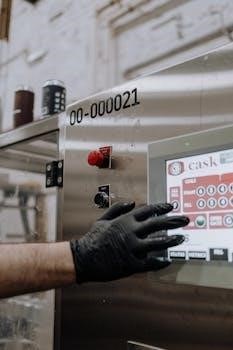Fog machines are essential tools for creating captivating atmospheres, from stage performances to Halloween haunts. They work by obscuring what lies beyond them, producing a thick fog that blocks views while adding a spooky ambiance. These machines have become a popular choice for generating unique effects at various events.
What is a Fog Machine?
A fog machine, also known as a smoke machine, is a device that produces a dense, cloud-like vapor that resembles fog. The core principle involves heating a specialized fluid, which then vaporizes and is propelled out of the machine, creating a visual fog effect. The generated fog is typically thick enough to obstruct visibility, making it ideal for creating dramatic or spooky scenes. These machines are used to enhance the atmosphere in many environments, from live concerts and theatrical productions to haunted houses and parties. They have become a staple in entertainment for their ability to add depth, mystery, and visual interest to a variety of events. The effect of the fog is achieved through a combination of heating elements, pumps, and specialized fluids designed to produce a safe and effective visual output. The output of the fog is variable, with some machines allowing users to control the amount and density of the fog produced. In essence, a fog machine is a tool for manipulating visual perception using artificially created fog.

Operating Your Fog Machine
Operating your fog machine involves initial setup, fluid filling, and understanding the remote controls. Proper use of timers and settings will help you achieve desired effects. Regular checks will ensure smooth operation.
Initial Setup and Fluid Filling
Before operating your fog machine, it’s crucial to perform the initial setup correctly. Start by carefully unpacking the machine and inspecting all components for any damage. Place the fog machine on a flat, stable, and heat-resistant surface, ensuring that it is away from flammable materials. Next, locate the fog fluid tank, usually located at the rear or side of the device. Unscrew the lid of the tank and carefully fill it approximately halfway with fog fluid. It is not recommended to fill the tank all the way to avoid potential spills and damage to your machine. Overfilling can also lead to unused fluid sitting for long periods, which can cause it to degrade or clog the internal mechanisms. Always use the proper fog fluid specified by the manufacturer to ensure optimal performance and prevent damage to your fog machine. After filling the tank, securely tighten the lid to prevent leaks, and then you are ready to connect the machine to a power source. Remember to always consult the user manual for specific instructions.
Using Wired and Wireless Remotes
Most fog machines come equipped with either a wired or wireless remote control, enhancing user convenience. The wired remote, a common option, typically features a simple on/off switch that allows for the fog machine to operate at full blast. The wireless remote provides greater flexibility, enabling users to control the fog output from a distance, and often includes additional functionalities. Many remote controls, whether wired or wireless, may include a volume control, which regulates the pump speed and the amount of fog generated. This allows users to adjust the density of the fog. Some wireless remotes may also include a dedicated button or fob specifically for activating the lights, if applicable. Ensure that the remote is properly connected or synced with the fog machine according to the manufacturer’s instructions. Always keep the remotes away from moisture and extreme temperatures. Refer to the user manual for specific details.
Timer Functionality and Settings
Many fog machines come with a built-in timer function, allowing for automated operation and hands-free fog generation. This feature is particularly useful for events or situations requiring consistent and timed fog output. The timer functionality typically allows users to set intervals for fog emission, often within a range of 0 to 30 minutes, depending on the model. Users can configure the duration of fog output and the pause between emissions. These settings are usually accessed through the remote control or the control panel on the fog machine. The specific timer settings and programming will vary, so it’s crucial to consult the user manual for your particular model. Proper timer usage helps conserve fluid and ensures the fog effects are synchronized with other elements of your event. Always double-check the settings before starting the fog machine to avoid unexpected fog outputs.

Safety and Maintenance
Proper safety and maintenance are crucial for the longevity and safe operation of your fog machine. Always adhere to the provided instructions, avoiding contact with hot parts. Regular maintenance ensures optimal performance and prevents potential hazards.
Cooling System and Overheating Prevention
Fog machines are equipped with a crucial cooling system designed to maintain the optimal temperature required for vaporization. This system is essential in preventing the machine from overheating as it continuously releases fog. The technology behind these cooling mechanisms ensures the fog machine operates safely and effectively, avoiding potential damage caused by excessive heat. The dissipation of heat is a critical factor in fog machine design, with materials chosen to promote efficient cooling. Without a functional cooling system, the fog machine would quickly become too hot, leading to malfunctions and posing a safety risk. It’s vital to ensure that the cooling system is not obstructed and is functioning correctly before each use. Some fog machines have built-in safety features that shut the unit down if it gets too hot, preventing further damage. Regularly inspecting the machine’s cooling system helps to ensure that it is working correctly, and is a vital part of fog machine upkeep. Neglecting the cooling system could result in the fog machine failing. Always follow the user manual guidelines for maintaining the cooling system to ensure safe and long lasting performance.
Proper Fluid Usage and Storage
Using the correct fog fluid is crucial for the optimal performance and longevity of your fog machine. Always refer to the user manual for the recommended type of fluid. Incorrect fluid can cause damage to the machine’s internal components. When filling the fog tank, avoid overfilling to prevent spills and potential machine damage. It is generally recommended to fill the tank about halfway. Do not leave fluid in the tank for extended periods. If you will not be using the machine for a while, empty the tank to prevent fluid from deteriorating and causing clogs. Store fog fluid in a cool, dry place away from direct sunlight and extreme temperatures. Proper storage helps maintain the fluid’s quality and performance. Planning ahead is essential when using fog fluid, calculating how much you need for the event. Include extra fluid to account for wind, temperature, and usage. Always turn off the fog machine before refilling with fluid. By adhering to these guidelines, you will ensure the safe and effective operation of your fog machine.
General Safety Precautions
When operating a fog machine, always prioritize safety. Read the entire user manual thoroughly before use and follow all instructions. Fog machines should only be used indoors unless otherwise specified in the manual. Never leave a fog machine unattended while it is in operation. Ensure the machine is placed on a flat, stable, and heat-resistant surface to prevent accidents. Keep the machine away from flammable materials. Avoid contact with the hot parts of the fog machine, always using the handles to carry it. Do not operate the machine without fluid, as this can cause severe damage. If the machine is not used for an extended time, unplug it from the power supply. Be aware of the potential for electrical shock, fire, and burns. Always use the correct power supply as specified in the user manual. If you notice any unusual sounds, smells, or other malfunctions, immediately stop using the machine and consult the manual or a qualified technician. These measures will help ensure safe operation and prevent potential hazards.

Advanced Features and Applications
Fog machines come in various types, some with DMX integration for advanced control. They’re used in diverse settings from concerts to theaters, and even for Halloween events. Some machines offer timer settings and wireless remotes, enhancing user flexibility.
Fog Machine Types and Variations

Fog machines exhibit a range of designs and functionalities, catering to diverse needs and applications. There are basic models that use a simple on/off switch, often controlled by a wired or wireless remote, providing an affordable option for generating fog effects at full blast. These are ideal for smaller events or personal use where complex adjustments aren’t necessary. More advanced machines may include volume control, which regulates the speed of the pump, allowing users to control the amount of fog produced by adjusting the fluid flow through the heat exchanger. Furthermore, some fog machines are equipped with built-in timers, enabling automatic operation within specified time intervals, typically ranging from 0 to 30 minutes. This feature is particularly useful for timed sequences or continuous fog output during events. Beyond standard fog machines, specialized units like low-lying fog machines, often utilizing dry ice or specific cooling systems, create a ground-hugging fog effect for more dramatic presentations. Some models also incorporate lighting effects, creating a multi-sensory experience, while others emphasize portability, like handheld fog machines, for on-the-go atmospheric effects. The diversity in fog machine types ensures that there’s a suitable option for every scenario.
Integration with Other Systems (e.g., DMX)
Advanced fog machines often feature capabilities for seamless integration with other lighting and control systems, enhancing the overall event experience. One common integration method is through DMX (Digital Multiplex) protocol, a standard communication language for stage lighting and effects. DMX allows for precise control of the fog machine’s output, enabling users to synchronize fog effects with lighting cues and other stage elements. This integration creates a more cohesive and dynamic presentation, allowing for complex choreographed routines. With DMX, users can adjust the fog volume, duration, and timing remotely through a central console. Furthermore, some fog machines can be integrated with other control systems via wireless remotes, offering flexibility in setup and operation. For instance, some remotes allow for both fog and light control, combining two functions into a single device. This feature simplifies the management of multiple effects and enhances the user experience. Whether through DMX or wireless communication, integration with other systems provides the ability to create sophisticated and immersive environments. Proper connection and configuration are crucial for optimal performance. Therefore, always refer to the user manual for detailed instructions on integration methods.
Troubleshooting Common Issues
Even with proper care, fog machines may encounter issues. One common problem is insufficient fog output, often caused by low fluid levels or a clogged nozzle. Check the fluid tank and fill if necessary, ensuring you are using the correct type of fog fluid. Additionally, examine the nozzle for any blockages, cleaning it gently with a soft cloth. Another issue is overheating, which can be prevented by ensuring proper ventilation and not running the machine continuously for extended periods. If the machine fails to heat up, check the power supply and ensure all connections are secure. A faulty remote can also lead to operational problems; try replacing the batteries or checking the remote’s functionality. If the machine produces unusual noises, it could signal a pump issue or other internal problem. If the problem persists, consult the user manual for further guidance or consider contacting a technician. Regularly clean and maintain your fog machine as per the manual’s instructions to prevent recurring issues. It is also important to ensure you are using the device in accordance with the manufacturer’s guidelines, as improper use can lead to malfunctions. Finally, always unplug the device if you are not using it.
Proper maintenance, fluid usage, and timely care will extend your fog machine’s life. By following the manual’s guidelines, you ensure optimal performance and prevent common issues. Regular checks and correct operation will maximize its lifespan.
Extending Machine Life and Performance
To ensure your fog machine operates efficiently for years to come, regular maintenance is crucial. Always use the recommended fog fluid and avoid filling the tank completely to prevent spills. Letting fluid sit for extended periods can cause issues, so it’s best to use fresh fluid. Before extended storage, drain the tank and run the machine briefly to clear the lines. Check for any clogs or blockages and clean them as needed. Proper handling, like avoiding contact with hot surfaces and using handles to carry, is essential to prevent damage. If you won’t be using the machine for an extended time, unplug it from the power supply to prevent potential electrical issues. Remember to refer to your user manual for specific cleaning and maintenance instructions. By following these steps you can extend the life of your fog machine and maintain consistent performance. Regular upkeep is key to preventing premature wear and tear.

Leave a Reply
You must be logged in to post a comment.